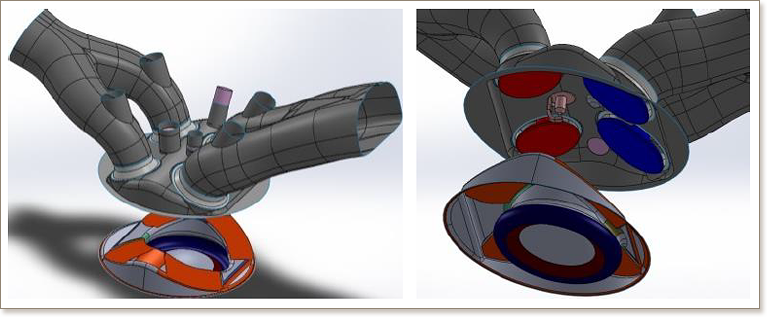


Gasoline compression ignition (GCI), also known as partially premixed compression ignition (PPCI) and gasoline direct injection compression ignition (GDICI), engines have been considered an attractive alternative to traditional spark ignition engines. Lean burn combustion with the direct injection of fuel eliminates throttle losses for higher thermodynamic efficiencies, and the precise control of the mixture compositions allows better emission performance such as NOx and particulate matter (PM). Recently, low octane gasoline fuel has been identified as a viable option for the GCI engine applications due to its longer ignition delay characteristics compared to diesel and lighter evaporation compared to gasoline fuel [1]. The feasibility of such a concept has been demonstrated by experimental investigations at Saudi Aramco [1, 2]. The present study aims to develop predictive capabilities for low octane gasoline fuel compression ignition engines with accurate characterization of the spray dynamics and combustion processes. Full three-dimensional simulations were conducted using CONVERGE as a basic modeling framework, using Reynolds-averaged Navier-Stokes (RANS) turbulent mixing models. An outwardly opening hollow-cone spray injector was characterized and validated against existing and new experimental data. An emphasis was made on the spray penetration characteristics. Various spray breakup and collision models have been tested and compared with the experimental data. An optimum combination has been identified and applied in the combusting GCI simulations. Linear instability sheet atomization (LISA) breakup model and modified Kelvin-Helmholtz and Rayleigh-Taylor (KH-RT) break models proved to work the best for the investigated injector. Comparisons between various existing spray models and a parametric study have been carried out to study the effects of various spray parameters. The fuel effects have been tested by using three different primary reference fuel (PRF) and toluene primary reference fuel (TPRF) surrogates. The effects of fuel temperature and chemical kinetic mechanisms have also been studied. The heating and evaporative characteristics of the low octane gasoline fuel and its PRF and TPRF surrogates were examined.